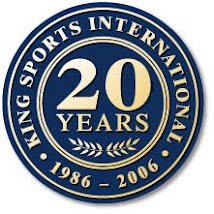I was driving past a playing field at 6am this morning and saw a group of young people participating in a group training session. I thought on my way back I would stop and watch, get some cultural insights. A few minutes later I was back, and pulled over, enjoying the fresh morning sun and the crisp morning air. They were stretching, in a static hip flexor position, a very popular one, however it only covers half the work needed in that area, so I hoped they would show greater variety in this position. They didn’t. In fairness I didn’t know if they had done this before I stopped. But what I did note was they were doing two stretches in one – an upper body one at the same time they were doing a lower body one. I could see the influence for this, as it’s a current dominant trend.
I was looking forward to the rest of the workout. Then they stopped. I was wondering if it was a drink break, but by the way they were back slapping and packing up I realised it was all over.
Then I remembered – you only do static stretching, at the end of the workout! Another new trend. Then I saw the heavy ropes being packed up, and the Prowler. That was all I needed to know – they were doing all the ‘current things’.
I have had this discussion with many around the world – athletes, coaches, and personal trainers. And one thing keeps coming up – they can rationalize the benefits of it. Overlooking the fact that most of these rationalizations are little more than parroting the marketing – let me make this point. I am not interested in whether you think it is beneficial. I want to know if it is the best thing to be doing. I want to know if you have asked yourself this question. I want to know if you have put in the energy that the end users adaptations deserve as to whether what you are doing is the best choice.
Now if you are involved in personal training, I can cut you some slack. Expectations on outcome are less precise. The main concern is the injury potential of what you are doing. But if you are involved with athletes, there is more weighing on your decisions as the outcome as measured by competitive success is more specific – very specific – and the rationalization that it’s a dominant trend or you can regurgitate the benefits are of even less value, and any absence of discernment in decision making more potentially serious – you are now not only dealing with injury potential, you are also dealing with performance decrement or increase.
The unique thing about sports training is you can’t market or convince your way onto the podium.
So I repeat – I am not interested in the rationalization of the benefits of your training choices. I am not interested whether what you choose to do is the current dominant trend (in fact I am almost definitely going to be concerned if this is the case). I just want to know how much discernment you are willing to employ in your decision making. The world needs more discernment, less non-thinking compliance to training methods and exercise equipment.
Subscribe to:
Post Comments (Atom)




"The world needs more discernment, less non-thinking compliance to training methods and exercise equipment."
ReplyDeleteCouldn't agree more Ian. Nice post.